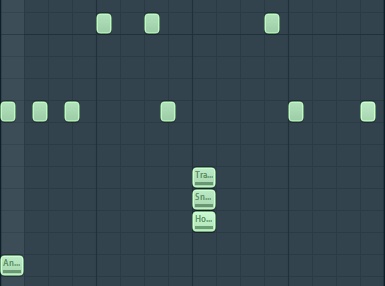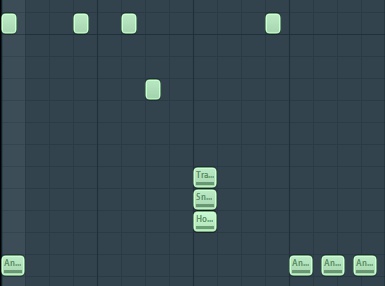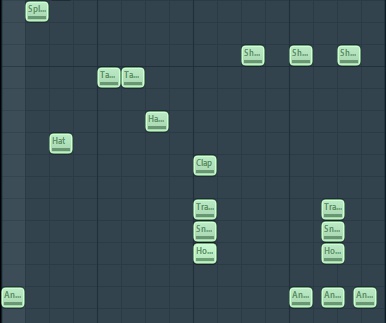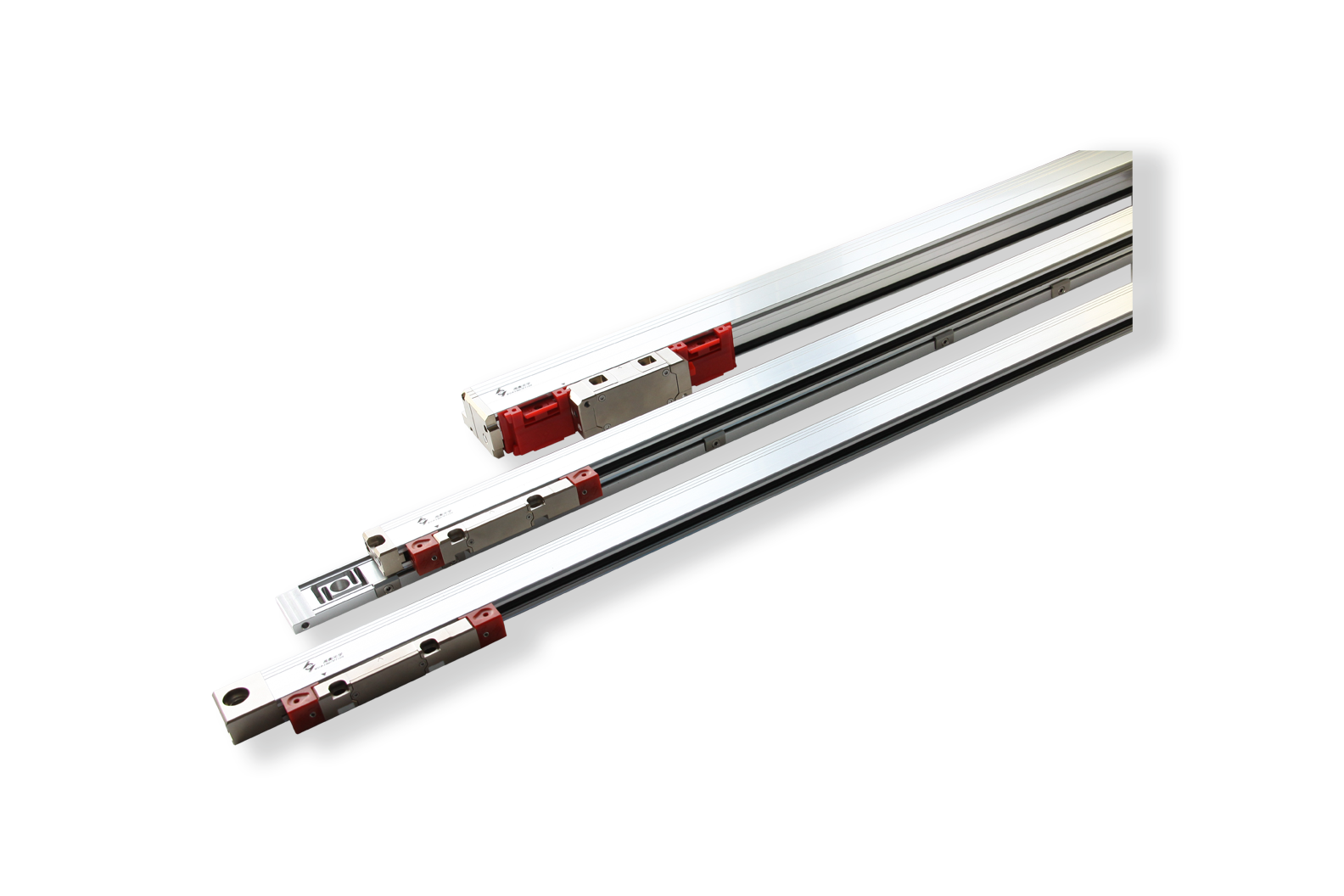[Audio Network Information]
Introduction to Dub-step <br> Unless you live in a country that is very turbulent, you may not have heard of Dub-step. Whether you are aware of this issue. Dub-step, a branch of electronic dance music, has become popular with its sparse rhythm, dark shades and Bass that stimulate the eardrum. Dub-step mixes many other genre music elements (such as Drum n' Bass, Dub (Reggae), 2-Step, Glitch, Hip-hop) and combines these elements to create their own unique style.
Dub-step originated in the UK, but it has now had a huge impact on the global scale. Especially in the mainstream radio stations or nightclubs in the United States, it is widely popular in the form of Remix. The main signs of Dub-step are: half-beat drum rhythm, shaking bass, dark background sound. These elements are combined to make the song full of charm.
Building a project <br> Like many other genres, creating a Dub-step is a certain way. You don't have to follow these routines. But before you break through these routines, you should at least understand the nature of these routines. As a new genre of electronic music, Dub-step is very representative. So I suggest that before you have a deeper understanding of this genre, it is best to follow some of its basic routines.
1. First, create a new project in your digital audio workstation. (I am using Fl Studio).
2. Set the speed of your project between 138-142Bpm. When I'm making this type of music, I usually like to set the speed to 140Bpm. However, for different producers, there may be some subtle differences in the preference for the speed of the song.
3. Next, add a sample of your favorite electronic drum to your project. The purpose of this tutorial is not to teach you how to make drum sounds that sound very unique in Dub-step, so when choosing drum sound sampling, make sure that the samples you choose sound very tight, and that It has a strong impact (you know why when you hear the drums).
4. Finally, add the kick drum to the track one, and add the snare drum to the track two, as shown in Figure 1.
*Note (the track is below, the track is on)

Figure 1: Please listen to example_1.MP3
Now you may have a question: Why do you want to set the speed of the song to 140Bpm, place the kick drum in the track one, and place the snare drum in the track three. The reason is that, under normal circumstances, the Dub-step drum kit is built at a half-beat rhythm, while the bass and other parts are usually built at the rhythm of the whole beat, which makes us easier. Create some sense of pause. The transition between the half-beat rhythm and the whole beat rhythm is also a feature of Dub-step, one of the branches of electronic music.
The Importance of Sparseness<br> For Dub-step, “sparseness†is an important factor in making drum kits unique. You will often hear the kick drum and snare drum in the drum kit in the prelude, or the end, only one or three strokes. In the end, you will find that you don't need to add more content than the kick drum and snare drum. As the song progresses, you should gradually increase the tapping of some drums. As you add something new to the audience, you still need to maintain the natural sparseness of the drum kit. Because if the drum set is full at the beginning of the song, the song will look weak when it reaches its climax.
If the drum set gives the overall feeling of being very sparse. Then when you make some changes to the rhythm of the song, the audience can clearly feel it. This is why we should be very careful when changing the drum rhythm. In the next section, there are a lot of suggestions for rhythm, you can do some fine-tuning on them and add them to your basic rhythm.
Decorative sounds <br> How to add some changes while keeping the drum set sparse? One of the easiest ways is to use decorative sounds. Traditionally, decorative tones are notes that are played quickly after the basic notes. If you want to quantify these modified notes in the piano window, you usually need to use a one-third or finer quantization setting. If we use the 16th note as a 32th note at 140Bpm, then the rhythm of our drums will sound like 70Bpm. However, this special method allows us to use 32-point notes in audio workstations that do not allow the use of 32-note notes. Below are some examples of the use of decorative sounds in the Dub-step production process, as shown in Figures 2, 3, and 4.

Figure 2: Please listen to example_2.MP3

Figure 3: Please listen to example_3.MP3

Figure 4: Please listen to example_4.MP3
Another sign of the triplet Dub-step is to use a triplet at the right moment to add some rocking sensation to the rhythm of the drum kit. In some parts, your rhythm will need a little rocking. In other parts, you may need some legato feelings, similar to the use of modifiers. Whether you're at a speed of 140Bpm or a speed of 70Bpm, you can use triplets. If you mainly use half beat as your rhythm, then at the speed of 140Bpm, the triplet will feel like a six-tone. At 70Bpm, they feel like an ordinary triplet.
The following examples of the use of these triplets are worth remembering. They can be used very well in your Dub-step production process, as shown in Figures 5, 6, and 7.

Figure 5: Please listen to example_5.MP3

Figure 6: Please listen to example_6.MP3

Figure 7: Please listen to example_7.MP3
Extra Drums <br> By now we have a lot of different ideas about rhythm, and these ideas can be used anywhere in the construction of the Dub-step drum kit. In Dub-step, in addition to the kick drum and snare drum, we can add some extra Hi-hats, Shakers, Tambourines, Cymbals, or some other sound effects. In fact, the easiest way to get a sense of legato is to add some squeaking sounds or percussion sounds that contrast with the kick drum and snare drum.
You need to think about these extra drums and then make the whole drum set a whole. These things are easier to add when you have some Bassline, or some melody parts. If there is nothing else to help you add this content, then starting with a song you are familiar with is a good choice, you can use it as a remix song. The following are still some examples, as shown in Figures 8, 9, and 10.

Figure 8: Please listen to example_8.MP3

Figure 9: Please listen to example_9.MP3

Figure 10: Please listen to example_10.MP3
Conclusion <br> Although this tutorial does not cover the entire contents of the dubstep drum group, it includes most of the basic content. Remember to keep the drum kits sparse and add them at the height of the climax to increase their knocking. In short, let your drum kit form a whole between opposition and unity, and try to keep up with the rhythm.
Introduction to Dub-step <br> Unless you live in a country that is very turbulent, you may not have heard of Dub-step. Whether you are aware of this issue. Dub-step, a branch of electronic dance music, has become popular with its sparse rhythm, dark shades and Bass that stimulate the eardrum. Dub-step mixes many other genre music elements (such as Drum n' Bass, Dub (Reggae), 2-Step, Glitch, Hip-hop) and combines these elements to create their own unique style.
Dub-step originated in the UK, but it has now had a huge impact on the global scale. Especially in the mainstream radio stations or nightclubs in the United States, it is widely popular in the form of Remix. The main signs of Dub-step are: half-beat drum rhythm, shaking bass, dark background sound. These elements are combined to make the song full of charm.
Building a project <br> Like many other genres, creating a Dub-step is a certain way. You don't have to follow these routines. But before you break through these routines, you should at least understand the nature of these routines. As a new genre of electronic music, Dub-step is very representative. So I suggest that before you have a deeper understanding of this genre, it is best to follow some of its basic routines.
1. First, create a new project in your digital audio workstation. (I am using Fl Studio).
2. Set the speed of your project between 138-142Bpm. When I'm making this type of music, I usually like to set the speed to 140Bpm. However, for different producers, there may be some subtle differences in the preference for the speed of the song.
3. Next, add a sample of your favorite electronic drum to your project. The purpose of this tutorial is not to teach you how to make drum sounds that sound very unique in Dub-step, so when choosing drum sound sampling, make sure that the samples you choose sound very tight, and that It has a strong impact (you know why when you hear the drums).
4. Finally, add the kick drum to the track one, and add the snare drum to the track two, as shown in Figure 1.
*Note (the track is below, the track is on)

Figure 1: Please listen to example_1.MP3
Now you may have a question: Why do you want to set the speed of the song to 140Bpm, place the kick drum in the track one, and place the snare drum in the track three. The reason is that, under normal circumstances, the Dub-step drum kit is built at a half-beat rhythm, while the bass and other parts are usually built at the rhythm of the whole beat, which makes us easier. Create some sense of pause. The transition between the half-beat rhythm and the whole beat rhythm is also a feature of Dub-step, one of the branches of electronic music.
The Importance of Sparseness<br> For Dub-step, “sparseness†is an important factor in making drum kits unique. You will often hear the kick drum and snare drum in the drum kit in the prelude, or the end, only one or three strokes. In the end, you will find that you don't need to add more content than the kick drum and snare drum. As the song progresses, you should gradually increase the tapping of some drums. As you add something new to the audience, you still need to maintain the natural sparseness of the drum kit. Because if the drum set is full at the beginning of the song, the song will look weak when it reaches its climax.
If the drum set gives the overall feeling of being very sparse. Then when you make some changes to the rhythm of the song, the audience can clearly feel it. This is why we should be very careful when changing the drum rhythm. In the next section, there are a lot of suggestions for rhythm, you can do some fine-tuning on them and add them to your basic rhythm.
Decorative sounds <br> How to add some changes while keeping the drum set sparse? One of the easiest ways is to use decorative sounds. Traditionally, decorative tones are notes that are played quickly after the basic notes. If you want to quantify these modified notes in the piano window, you usually need to use a one-third or finer quantization setting. If we use the 16th note as a 32th note at 140Bpm, then the rhythm of our drums will sound like 70Bpm. However, this special method allows us to use 32-point notes in audio workstations that do not allow the use of 32-note notes. Below are some examples of the use of decorative sounds in the Dub-step production process, as shown in Figures 2, 3, and 4.

Figure 2: Please listen to example_2.MP3

Figure 3: Please listen to example_3.MP3

Figure 4: Please listen to example_4.MP3
Another sign of the triplet Dub-step is to use a triplet at the right moment to add some rocking sensation to the rhythm of the drum kit. In some parts, your rhythm will need a little rocking. In other parts, you may need some legato feelings, similar to the use of modifiers. Whether you're at a speed of 140Bpm or a speed of 70Bpm, you can use triplets. If you mainly use half beat as your rhythm, then at the speed of 140Bpm, the triplet will feel like a six-tone. At 70Bpm, they feel like an ordinary triplet.
The following examples of the use of these triplets are worth remembering. They can be used very well in your Dub-step production process, as shown in Figures 5, 6, and 7.

Figure 5: Please listen to example_5.MP3

Figure 6: Please listen to example_6.MP3

Figure 7: Please listen to example_7.MP3
Extra Drums <br> By now we have a lot of different ideas about rhythm, and these ideas can be used anywhere in the construction of the Dub-step drum kit. In Dub-step, in addition to the kick drum and snare drum, we can add some extra Hi-hats, Shakers, Tambourines, Cymbals, or some other sound effects. In fact, the easiest way to get a sense of legato is to add some squeaking sounds or percussion sounds that contrast with the kick drum and snare drum.
You need to think about these extra drums and then make the whole drum set a whole. These things are easier to add when you have some Bassline, or some melody parts. If there is nothing else to help you add this content, then starting with a song you are familiar with is a good choice, you can use it as a remix song. The following are still some examples, as shown in Figures 8, 9, and 10.

Figure 8: Please listen to example_8.MP3

Figure 9: Please listen to example_9.MP3

Figure 10: Please listen to example_10.MP3
Conclusion <br> Although this tutorial does not cover the entire contents of the dubstep drum group, it includes most of the basic content. Remember to keep the drum kits sparse and add them at the height of the climax to increase their knocking. In short, let your drum kit form a whole between opposition and unity, and try to keep up with the rhythm.

Absolute Linear Encoders,Custom Absolute Encoder,Rotary Encoder Magnetic,Miniature Absolute Encoder
Yuheng Optics Co., Ltd.(Changchun) , https://www.yuhengcoder.com
